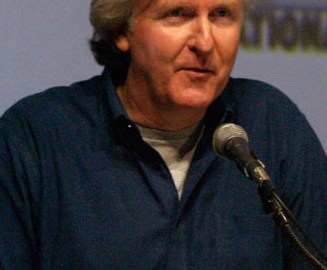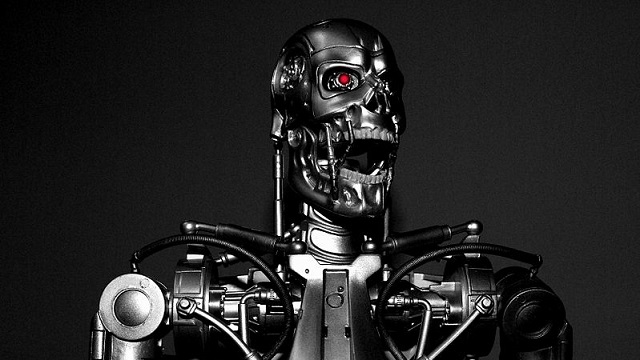James Cameron’s Evolving, Veiled Take on the Military-Industrial Complex

In a Hollywood that became increasingly politicized (some moviegoers would say “boring”) over the past five years, James Cameron is generally considered a-political. Among the all-time box office kings, the content of his latest film, Avatar, contrasted against his overall body of work actually shows an interesting sliver of political consciousness that may have shifted.
After briefly studying philosophy at Cal State Fullerton, Cameron’s early work set the mold for the conventional blockbuster, but there are some veiled politicized messages in there as well. His first film, the Terminator, involves a killer cyborg that has taken the form of the future Governor of California and has been sent from the future to wage a war for a robot regime. The subtext of Terminator involves a human uprising literally fighting against the machine. In the years since, Terminator and its 1991 sequel, also directed by Cameron, have been the subject of a number of political and economic theses.
Unbeknownst to many, one of Cameron’s first screenwriting credits was Rambo II. That film demonstrated the two faces of the might-is-right military industrial complex as well as a character who has been further dissected by academia.
But perhaps most-fascinating is Cameron’s True Lies, another Schwarzenegger film that stylishly and superficially looked at the Islamist terrorist threat ages before anyone knew who Osama bin Laden even was. As a fictional take on the War on Terror, it still stands up over 15 years after its release. But with the release of the CGI-laden Avatar 25 years after the Terminator, Cameron’s portrayal of the military may have shifted.
While many characters in Cameron’s older films rarely ducked conflict, the indigenous Na’Vi people populating Avatar actively avoid it while living a spiritual lifestyle in which they cohabitate with the life force around them in the fictional Pandora rainforest. On the other hand, a corporate military force looks to destroy the Na’Vi and plunder their natural resources. The leader of this army, Colonel Miles Quaritch (played by actor Stephen Lang), is a relentless aggressor who vows to “fight terror with terror.” Many of his actions in the film are portrayed as indefensible and reprehensible by Cameron.
In an odd tangential way, the work of Cameron’s ex-wife Kathryn Bigelow, casts an increasingly-political look on his work as well as Hollywood’s in general. In an era that has seen countless mediocre films portray the war in Iraq, Bigelow’s the Hurt Locker was a critical darling that the New York Times’ Manohla Dargis praised for how it “transmits the sickening addiction to war as well as its horrors in largely formal terms.”
Obviously there is no real, formal connection between the work of Bigelow and Cameron, who were divorced in 1991. But considering the almost-simultaneous releases of each director’s most politically-inflected films, it does make things interesting.




